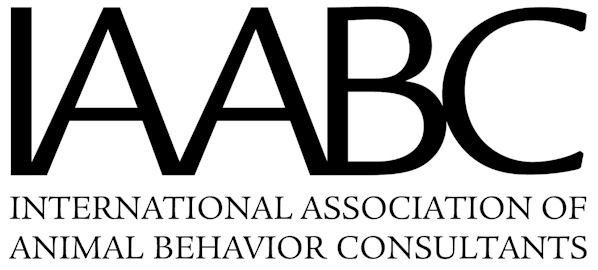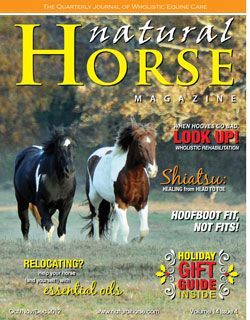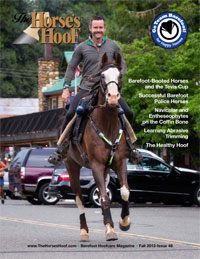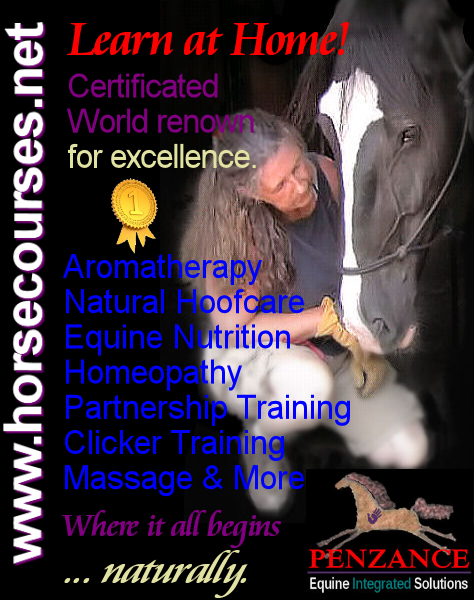What I do is shape the horse’s character to fit in harmony with me …
Uh oh — am I about to embark on something that will raise hackles ? Dunno — but here I go anyway.
The above quote is from someone who is very well known throughout the equine world – from a newsletter that was distributed this week to subscribers.
Yep, I’m a subscriber to it. There’s always something new to learn from something and someone if we listen carefully.
The above statement led me here.
The sentence in quotes above jumped out at me so strongly that my spirit recoiled and immediately responded,
WHY NOT SHAPE OUR OWN CHARACTERS TO FIT IN HARMONY WITH THE HORSE!?!?!
And then a wee small voice replied with one word –
E.G.O.
When we try to shape a HORSE to fit in harmony with US then it becomes about us … and not the horse.
Our focus turns to … us and what we want … and not the horse.
And if we’re focusing on U.S. and not the horse then we can’t focus on anything else — mainly, the horse! (does this sound like I’m talking in circles? Read again, carefully, and FEEL what I’m writing.)
We may not use spurs or whips or tie downs or gagbits and other misused items with which to ‘control’ the horse but — BUT —
If we are shaping a horse’s character to FIT US, even with the most ‘gentle’ means, is that still not an egotistical desire to control?
We are not horses and horses are not us. Plain and simple.
Why not learn to appreciate the animal and learn to communicate with the horse in a manner which preserves and enlightens the HORSE’S character?
Afterall, we dont’ try to shape our friends’ characters to fit in harmony with ours —
We try to blend two unique personalities into a mutual place that complements BOTH individuals.
We try to enhance and nurture that special bond that occurs through mutual respect and trust and love.
It’s about the bond, the connection, the spiritual tie that allows for that unique partnership and friendship.
It’s about the other partner AND about — US — together.
I love each one of my horses and those others whom I’ve met for their unique, individual qualities.
Why would I want to change them?
It all goes back to, “It’s all about what’s in your heart and how you use it.”











Everything must always be taken in context! As usual, it just depends, doesn’t it? If I am working with a spoiled horse that has been taught by some unknowing human that it’s ok to bite and kick, then I am going to use a lot more pressure than I would with a horse that’s already a member of my herd. I’m going to show that rascal some teeth and hooves and I’m going to continue to up that pressure until I get the desired response and that horse understands that at all times I am the herd leader, that’s exactly what the lead mare would do and she would kick his butt until he complied! If you have ever watched the interactions of a herd of horses then you know exactly what I’m talking about. A disrespectful herd member is driven away in fear of his life and kept away until he is willing to change his attitude! Some of the most God awful kicking and squealing you’ve ever heard goes on in those conversations that horses have with one another, they often bring blood and hair. Horses know that there absolutely MUST be a leader!
I would suggest that a horse that is a stranger to you is not going to react to you in the same way that your horses do. It all depends!
I am not suggesting by any means that you need to be abusive! But you do need to be in control and you need to establish that fact in the horses mind, otherwise your training will never happen because the horse is thinking ok enough of that… time to get back to important stuff, like eating and you’re thinking ok let’s go riding! There has to be communication.
I want my horses to come to me EVERY time I call and I want to achieve that by letting them learn that being with me is more fun than being away from me! To achieve that, there has to be communication from the leader of the herd.
Enjoy
I would not want to use teeth and hooves, not even a flick of the tail or ears back with a hard stare on my horses.
If I give them no reason to hurt me they are not going to be aggressive.
They understand some of my words, so if I need space to empty a muck sack whilst they have chosen to hang in the barn instead of go out to play or graze, then “excuse me, can you let me through” tends to work. When we say words horses can visualise the pictures we are sending.
If my big horse cannot move back because a sheep is lay down, I put a hand on the back of his foreleg and go under dragging the plastic sack. He knows I am not a threat so he does not react in defensive manner.
Trust is a two way street, I cannot expect trust if I do not trust them. As long as the message is clear in my head, I trust my horses to try to understand.
When I have no hidden agenda, no expectation, when I am free from any goal driven incentives, the horses seek me out.
If I call and they do not choose to come, then I will not seek to go play with them, yet to date I have not walked to catch them and they have never missed a hoof trim appointment or any other appointment.
Why would we need to be dominant or take a tough line?
How devasting might that be to a rescue horse or foal at weaning?
Hold a rope tight and a horse may need to pull against it, leave the horse at liberty to follow or walk with a rope with a loop in and there is no resistance, not like I could win a strength battle so why initiate one?
Humans are hand and eye dominant, and we all have EGO’s, so best I take note of the wisdom and ensure my ego stays home when I am out with the horses. xx
And Gwen it is that most subtle application of pressure and release that we are striving to achieve isn’t it? The thing I so love about reining and dressage is that when done correctly it is entirely breath taking, awe inspiring and beautiful to see. It epitomizes the level of perfection that can be achieved when the two have become one! Oh that I were young enough and agile enough to start fresh with a young horse and apply the techniques it has taken me a life time to learn!
Oh Tony — you and I and others our age — what we wish we knew when we were younger. *LOL* On the other hand, if we DID know then we probably wouldn’t have accomplished as much as we have. 😉
I think we are so lucky if we have a horse that are fit to us and the bond is good. There’s a lot of things that you can do and also there’s a love if they are both together.
Wouldn’t you agree that sometimes a part of that learning/teaching process does involve us showing our teeth and hooves? We up the pressure until we get the desired results, then we reward the correct behavior. Pressure and release is at the heart of everything we do in our efforts to be one with the horse.
When we take the horse to the upper levels of performance without that tool of pressure and release how we would achieve a flying change or a piaffe or a sliding stop or a counter canter?
We do listen to the animals (Job 12) but we must also insist gently that the animals listen to us. Good training absolutely is devoid of harshness! But the problem is that some get to believing that there is no room for tools, there is a place for different style bits, spurs, crops, etc in the hands of a knowledgeable handler/owner/trainer.
There’s no need to throw out these tools, there is a huge need to educate in the proper use of tools! Pressure/release is at the heart of the natural horsemanship movement and was not widely recognized or accepted until a very few short years ago. We continue to learn and to “experiment” with new methods.
I have heard many say to throw away the Tom Thumb for example. I would disagree, it can be a very harsh, head numbing bit to use on a horse when used incorrectly, but it can also be a very effective tool at correcting problem behaviors in horses that have been mishandled.
There are as many different scenarios as there are horses and humans and so we walk a very fine line when we insist that there is only one way that will work in achieving that partnership we are looking for in the horse/human relationship.
There are some who use nothing but positive reinforcement with excellent results. Shaping a behavior is absolutely non-force, non pressure & release. But then, to be fair, pressure from our seat in the saddle, while subtle enough, is still pressure and release, isn’t it *grin*.
Remembering that we don’t teach the horse how to do anything that he doesn’t already know how to do goes a long way in helping to change our thinking and teaching. We don’t teach the horse to pirouette or piaffe or come to a sliding stop — he already knows how to do these things. What we do is establish a 2-way communication to relay our cues to the horse and teach him exactly what they mean.
Tools are tools. Unfortunately there are far too any who still use tools as extensions of their own frustrations because their focus is on their own ‘lack of control’. It’s about the mindset of the teacher rather than the tool used.
Absolutely we must insist that they listen to us as much as we listen to them! But isn’t listening one of those things that is paramount to any solid relationship or partnership?
Yes, I agree that there are as many different scenarios as there are horses and humans. EVERY single ‘scenario’ is different one from another. That’s why its so paramount to not focus on our our ‘selves’ but to realize that every single horse is a unique entity to his own and be open enough to focus on the horse. If you’re listening intently to another person then you are *focusing* on that person and what he or she is saying, right? You’re trying to understand the other’s viewpoint as an individual — you don’t focus on trying to ‘shape’ the other’s character to fit your own!
See the difference? Am I making sense here? If one is focused on one’s own self then much is missed of the other’s message. Regardless of the language. And when one is focused on one’s own self then there’s not much room for anyone else.
But Tony — by establishing our boundaries and space in order to keep us safe we seek to do that in a manner that the HORSE can understand cause they are horses and understand that completely! We don’t allow our ‘friends’ to punch us around — we let them know in a manner that THEY understand that we don’t like that and won’t accept it. Horses don’t naturally go after each other with wrath unless its wholly deserved. They naturally ‘just wanna get along’ with each other.
Any healthy relationship has boundaries. If I wanted to be friends with someone who only spoke French and I only spoke English, would I sit and yell and push and shove and poke and prod that person to make them understand – try to force them to speak English? No, I’d try to find a way that the other person would clearly understand to relay my message. Then try help to blend the two, French and English, in a compatible manner that’s best for each. That means each would learn about the other and not one would focus on shaping the other. One would focus on learning and teaching.
Don’t forget Job 12:7-10 !! *GRIN*
Good observation. People say they love horses but I find most people put themselves first. “Loving” the horse even comes from the need to feel good about themselves.
We don’t want to change the horse itself, but we do want to mold its’ behaviors to fit in with our daily lives! If we allow the horse to be purely horse then when the horse decides that we have invaded its space then we are likely to feel the wrath of teeth and hooves, not a desirable thing for us frail humans. If that’s my EGO at work so be it. It is definitely in my heart to keep myself safe. Sometimes we can get a little too spiritual don’t you think? 🙂 Genesis 1:26 And God said, let us make man in our image, after our likeness: and let them have dominion over the fish of the sea, and over the fowl of the air, and over the cattle, and over all the earth, and over every creeping thing that creepeth upon the earth.
Blessings
/Tony